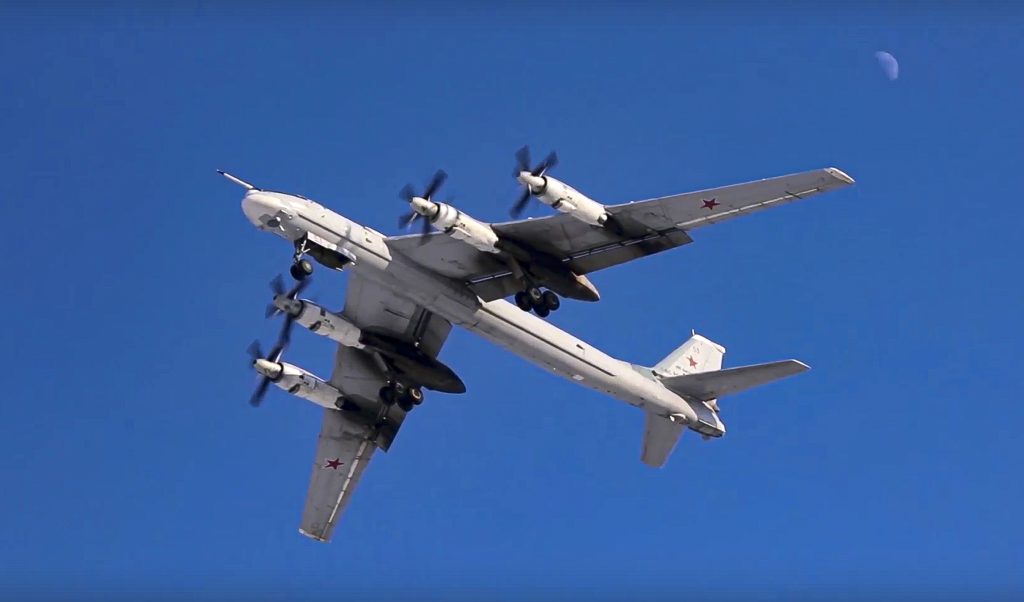Tu-95MS bombers from Arctic Russia launched in Ukraine attack

Tu-95MS bombers from Olenya airfield in the Murmansk region are Wednesday launching a large-scale attack with cruise missiles against Ukraine.
Ukraine’s Air Force reported on Telegram just before 2 am tonight that several strategic bombers made take-off from the strategic airbase Olenya on the Kola Peninsula.
A few hours later, the cruise missiles started to target the energy sector across Ukraine.
President Volodymyr Zelensky said more than 40 missiles were launched by the Russians, including at gas infrastructure.
It is at the time of writing not clear how many Tu-95MS bombers that take part in the attacks. New Voice of Ukraine news site reports about six Tu-95MS bombers, but the number is not confirmed.
During the attack, a pair of Norwegian F-35 fighter jets was scrambled to protect Polish airspace. Poland share borders with Ukraine, and previous Russian missiles have hit targets close to the NATO border.
Olenya airbase on the Kola Peninsula becoming increasingly important
Norway currently operates four F-35 jets in Poland as part of NATO’s Quick Reaction Alert. These are the same kind of fighter jets that Norway use to scramble when Russia flies show-off missions outside Norwegian airspace with T-95MS bombers from Olenya airbase.
Shortly after 8 am the all clear signal was given to most of Ukraine, Kyiv Independent reported.
It is also reported that none of the strategic bombers come from Engels, the airbase in Saratov region hit by multiple Ukrainian drones over the last few days. The drones exploded in the fuel storages at Engels at least two times, and massive fires are seen from the area.
Military analyst Denys Popovych told Radio NV that Moscow most likely now has to rethink deployment strategies. If the Engels airbase is considered unsafe, the Olenya airbase on the Kola Peninsula will become even more important both in Russia’s war against Ukraine, but also for the country’s nuclear deterrence.
Tu-95MS fleet is part of Russia’s nuclear-capable long-range bombers and plays a central role in second-strike capacity.
As reported by the Barents Observer last fall, work is in full progress to secure the aviation fuel tanks at Olenya with nets and other anti-drone measures. The airbase was attacked by drones on several occasions in July, August and September last year.
Related stories from around the North:
Canada: Military looks to establish naval reserve in Yukon, CBC News
Denmark: Denmark’s Arctic, North Atlantic focus: Canada among new defence attaché posts, Eye on the Arctic
Finland: Finland’s government parties want to keep eastern border closed, Yle News
Norway: Norway establishes NATO amphibious warfare center in Sørreisa, The Independent Barents Observer
Russia:Russia to begin artillery firing near Norway’s Grense Jakobselv, The Independent Barents Observer
Sweden: Updated version of Sweden’s preparedness guide sent out to households, Radio Sweden
United States: White House releases U.S. Arctic strategy implementation plan, Eye on the Arctic



